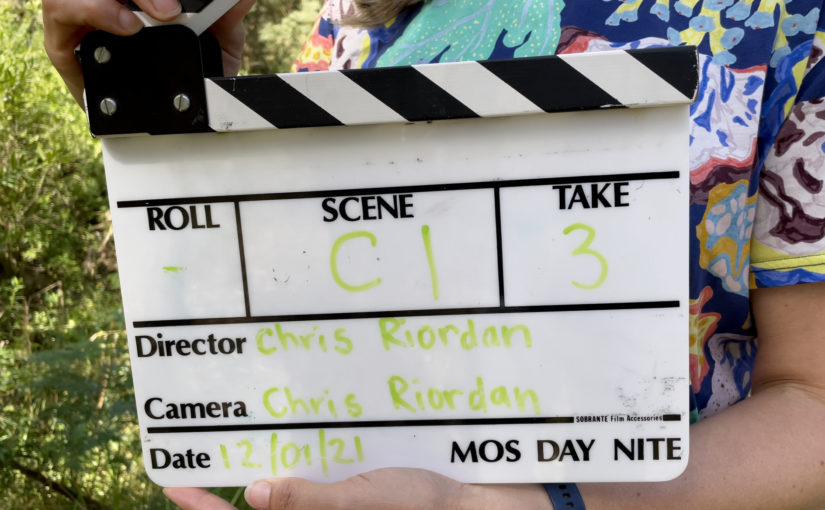15 years ago I joined the public service.
I know this, because my eldest child is now 15 and I joined the public service when he was born, because I was sick of being made redundant in the video production world.
In 2009 I was lucky enough to start the video team at DHS…and by ‘team’ I mean ‘me trying to teach myself how to shoot and edit videos, while desperately pretending that I knew what I was doing’ (full disclosure, my time in video production had been as a Producer…so I was really good at organising things, but not so good at the actual making of things).
11 years and one department change later, I’m now the manager of a creative team with three visual designers and two videographers.
A LOT has changed in this time for video. In 2009 only a few government departments had internal video people…now pretty much every deparment has a video team. Video used to be the high-end tool that was wheeled out to launch only the biggest and most prestigous projects…now videos are part of a daily social media content plan.
But some things have stayed the same, and so I thought I’d share the three essential ingredients I believe every video should have…so essential, that my team won’t work on projects that don’t contain all three!
Essential 1 – A Story
The days of people watching a video simply because it’s there, are gone…nowadays your videos need to engage and retain your audience. The best way to do this is with a story.
You can list the benefits of your new project or initiative as much as you like, but people don’t connect with projects and initiatives…they connect with people. So if you want to connect with your audience, you need to tell a story about how your project or initiative has benefited a person, or a family or a community.
So for example, training and apprenticeships are a great idea and you can talk a lot about the levels of funding and courses available…but that’s not going to make for an interesting video.
Or you can show the story of someone who grew up watching motorsport with her Dad and asking what things were and how they worked…and who has now done training in motorsport and has her Dad asking her what things are and how they work
Or someone who was originally a florist, and is now driving heavy machinery on major projects:
Never underestimate the power of a story!
Essential 2 – A Storyteller
Once you have your story, you also need someone who can tell the story in a way that will engage with your audience.
Now I know that the first option most people think of is to get the head of the organisation, or the CEO, or anyone in a senior role to do the talking on camera. After all, these people can say ‘This agile project will deliver key outcomes to our stakeholders and offer synergies with the sector’ without even flinching!
Plus, nothing helps get a video approved quickly, quite like having the person approving it, also being the star.
But I can promise you that it will not resonate with an audience, as it just won’t feel authentic. What you need is someone with an actual experience of what your video is focussing on…and if they’re too nervous or shy to talk on camera, then you need one of their peers, or a frontline worker who has seen how they’ve changed. In short, you need someone who your audience is going to like and want to listen to.
If you go with the boss, you will get all the right words in the right order…but if you go with someone who is actually telling their story, you’ll get a little piece of unscripted magic that people will genuinely engage with.
Essential 3 – A Visual Element
Video is a visual medium. So you need to tell your story visually, and you need to engage people visually. If you look at any of the videos above you will see that only about 10-15% of the footage is the person talking to camera, that vast majority is footage that tells the story and engages the viewer.
So before you commit to a project, ask what is the visual element of this video. If the project is a consultation, or a roundtable or a mentorship…just be aware that the footage of people talking to each other will be engaging for about 6 seconds…after that, you’re going to be in struggle town. If you absolutely have to make a video about something that is ostensibly about peope talking to each other, then it may be better to keep your powder dry and make a video about what the consultation/roundtable/mentorship actually resulted in (as that’s much more likely to feature people actually doing something…rather than discussing the many somethings they may or may not do!)
Also, the reality is that if you’re posting your content on social media, there is a VERY strong chance that the video will start playing without any audio, so you will need some REALLY engaging visuals if you want to convince people to unmute the audio and keep watching.
Farming = easy to show visually
Psychology = not so easy to show visually
So there you go, the three things we demand are part of any video project we commit to creating.
Next week I’m going to talk about the challenges of getting a video approved…especially in a Government context.
